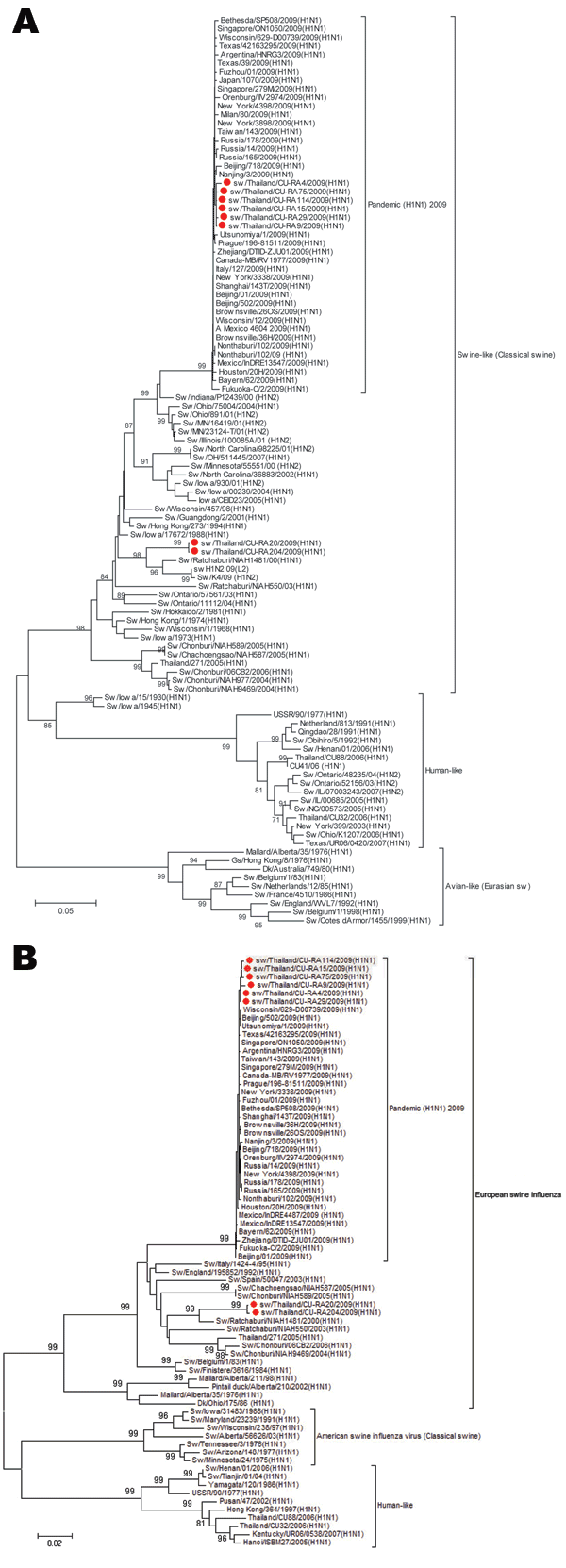Volume 16, Number 10—October 2010
Dispatch
Pandemic (H1N1) 2009 Virus on Commercial Swine Farm, Thailand
Figure

Figure. Percent of pigs with antibodies against pandemic (H1N1) 2009 virus and swine influenza virus (H1N1) detected by hemagglutination-inhibition test, by pig type, Thailand. Serum samples were obtained from pigs of different ages in January 2010. Samples were positive when titer was >40.
Page created: September 07, 2011
Page updated: September 07, 2011
Page reviewed: September 07, 2011
The conclusions, findings, and opinions expressed by authors contributing to this journal do not necessarily reflect the official position of the U.S. Department of Health and Human Services, the Public Health Service, the Centers for Disease Control and Prevention, or the authors' affiliated institutions. Use of trade names is for identification only and does not imply endorsement by any of the groups named above.